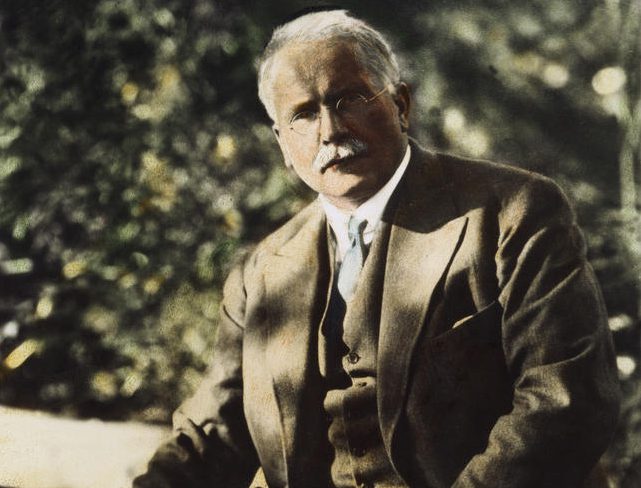Top Stories
Marie Antoinette: Figure of Myth, Magnet for Lies
Marie Antoinette was not entirely innocent in her lifetime; in fact, she was guilty of many extravagances.

“Let them eat cake.”
It’s one of the most famous remarks in history—an instantly recognizable catchphrase to convey haughty indifference to the misfortune of others. And we all know who said it and why: It was Marie Antoinette (1755–1793), the queen whose life was claimed by the French Revolution, dismissing news that the peasants were starving due to the high price of bread.
In the original French, the Queen allegedly said, Qu’ils mangent de la brioche!, which doesn’t quite translate to “let them eat cake.” Brioche is sweet, eggy bread that tastes only vaguely like cake. The translated English word “cake” made Marie Antoinette seem even haughtier than in French. But it’s beside the point, since Marie Antoinette never uttered “let them eat cake” in any language. There is no historical evidence that she ever uttered that phrase. The story is pure invention. It’s a historical legend that rivals the myth of Nero “fiddling” while Rome burned. And yet this outlandish fabrication has shaped our image of Marie Antoinette for more than two centuries.
Compared to other historical falsehoods, this legend is easy to trace to its source. It was the French philosopher Jean-Jacques Rousseau. In book six of his Confessions, written in 1767, Rousseau wrote of a “great princess” who had, when told that the peasants had no bread, replied with those words cited above, Qu’ils mangent de la brioche! Was Rousseau referring to Marie Antoinette? This is impossible. When he wrote that passage, Marie Antoinette was still a girl living at the Habsburg court in Vienna (under her original name, Maria Antonia Josepha Johanna). Rousseau’s story was entirely made up, probably borrowed from another source. And while his book wasn’t published till 1782, this was still seven years before the French Revolution began. In fact, the first time someone (spuriously) put the words “let them eat cake” in Marie Antoinette’s mouth was a half-century later, in a book published by Jean-Baptiste Alphonse Karr, Les Guêpes.
That we are still attributing this haughty remark to Marie Antoinette reveals how historical falsehoods can become entrenched in popular culture, especially when they confirm collective bias. Following the French Revolution, as republican values took hold in France, portraying Marie Antoinette as a supercilious queen offended no one. She and her Bourbon husband, Louis XVI, had been convicted and executed. To believe that Marie Antoinette had been treated abominably was too great a moral burden on the French national conscience. So she was transformed into an arrogant and extravagant Austrian princess who’d shown only contempt for the French nation. People believed the “let them eat cake” myth because they wanted to believe it.
Marie Antoinette was not entirely innocent in her lifetime; in fact, she was guilty of many extravagances. But she was a much more complex character than the cliché suggests.
When she first arrived in Paris in 1770 as the teenage bride of the French dauphin, Marie Antoinette was tremendously popular. The French papers described her as a glowing goddess of youth. “Born high above all ordinary thrones,” the official court paper, Mercure de France, declared. “To her belongs all the radiance of Divinity.” Four years later, when old king Louis XV died after a long reign, the French nation celebrated the ascension to the throne of the youthful Louis XVI and Marie Antoinette. This was still the era of strict controls on the press in France. The police had even cracked down on public poetry readings after it was discovered that students were reading verse critical of the king. Yet well-connected Parisians managed to pick up gossip at court by attending salons and meeting at cafés and other public places designated for the trading of information. One meeting place was under the famous “tree of Cracow,” a massive chestnut in the Palais Royal gardens. While the Mercure de France reported where the queen was spending Easter, the mauvais propos and bruits publics revealed juicy tidbits such as news of Louis XV’s latest mistress.
Marie Antoinette arrived in Paris at the end of this era of strict censorship, which helps explain why her honeymoon with French public opinion was short-lived. The official press, notably the Mercure and Gazette, continued churning out fawning snippets of society news about the royal couple. But the scandal-mongering libelles and pamphlets had their own paragraph men, called nouvellistes, who picked up “news” from well-informed sources posted on benches in the Tuileries, Luxembourg Gardens, and, of course, under the tree of Cracow. Police efforts to repress nouvellistes’ gossip proved futile in the face of high demand. One famous libelle of the era, Le Gazetier cuirassé promised “scandalous anecdotes about the French court.” (It was printed in London, out of reach of official French censors.) Another publication printed in London starting in the 1760s was the famous Mémoires secrets, an anonymous chronicle of insider gossip and anecdotes from Parisian high society. A scurrilous book about Louis XV’s mistress, Madame du Barry, also appeared as a collection of gossip that nouvellistes had picked up around Paris.
Despite the libelles circulating in Paris, the Bourbon monarchy was still relatively protected compared with the hurly-burly across the channel in London, where coffeehouses buzzed with political innuendo and intrigue. Some French philosophes, it is true, attempted to replicate London’s coffeehouse culture at Parisian cafés, such as the Procope on the Left Bank. (Voltaire frequented the place, where he liked to add chocolate to his coffee.) Other regulars at the Procope—named after the Byzantine writer Procopius, famous for his Secret History—were Rousseau, Danton, and Robespierre, as well as Americans Benjamin Franklin and Thomas Jefferson.

The Parisian equivalent of the coffeehouse was the salon, which differed from London coffeehouses in both ambiance and function. Whereas London coffeehouses were boisterously public, salons were essentially closed spaces, usually held in private homes. Most were by invitation only. Many were hosted by women, usually titled or wealthy ladies with an interest in culture and politics—such as Madame de Rambouillet, Madame Necker, Madame Geoffrin, and Mademoiselle Lespinasse. There was also the Marquise du Deffand, a friend to Voltaire and the English man of letters Horace Walpole, to whom she bequeathed not only her papers, but also her pet dog, Tonton.
As access to these rarefied spaces increasingly became a symbol of social success, admission got more tightly controlled. (Madame Geoffrin expelled Diderot from her salon because she found his conversation “quite beyond control.”) Still, those who frequented salons represented a great diversity within the elites—from rising young writers and established authors to powerful politicians and eccentric aristocrats. The tacit rule was, as in London coffeehouses, that wit was more important than rank. Many great French writers launched their careers thanks to their admittance. One was the philosopher Montesquieu, who found success at the salon of Madame Lambert.
It could hardly be claimed, however, that Parisian salons were dangerous hotbeds of political unrest, though some salons were known to be tolerant of opinions critical of the royal family. They tended to produce writing in the form of epistolary correspondences. Some salons produced weekly newsletters, though they often read like the society pages of a newspaper—announcements of engagements and deaths, information about government proclamations, and the like.
While, over time, the ideas and values that emerged from Parisian salons created an intellectual culture hostile to divine-right monarchy, it took generations for these ideas to germinate. Voltaire’s Lettres philosophiques was published in 1734, Montesquieu’s The Spirit of the Laws in 1748, and Rousseau’s The Social Contract in 1762—all decades before the storming of the Bastille. In comparison to England, where a divine-right monarchy had been toppled a century earlier, the French were still slowly catching up in the mid-18th century.
When Rousseau’s Confessions were published in 1782, it is doubtful that Marie Antoinette was even aware of the book. She had more pressing things on her mind. Even if revolution was still seven years away, there were already rumblings of discontent. The pamphlets in France were increasingly impudent and fearless about satirizing the royal family. Marie Antoinette’s extravagant tastes and spending habits were the subject of spiteful commentary. The fact that she was a foreigner did not help. In fact, many at court resented her for that reason alone.
Austria had been a longstanding enemy of France (her marriage to Louis XVI having been part of an effort to patch things up as part of a wider European power realignment). Marie Antoinette was described in pamphlets as l’Autrichienne—a proper feminine noun for Austrian, but the suffix chienne also meant “bitch.” There was speculation, fueled by poisoned gossip, about her sexual dalliances, notably with the Swedish ambassador to the French court, Count Axel de Fersen. Insinuations of infidelity were made plausible by rumors that Louis XVI was impotent (“mauvais fouteur”). When Marie Antoinette became pregnant, the pamphlets speculated on the real identity of the biological father.
Things took a turn for the worse for the foreign-born Queen when, in 1785, the so-called “Diamond Necklace” scandal erupted. As the great French diplomat Talleyrand remarked at the time, “Watch out for this diamond necklace business, it may well rock the throne of France.”






